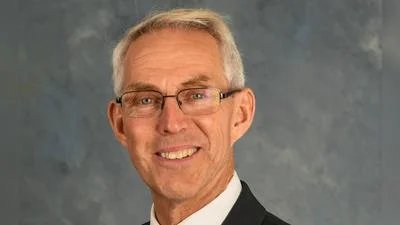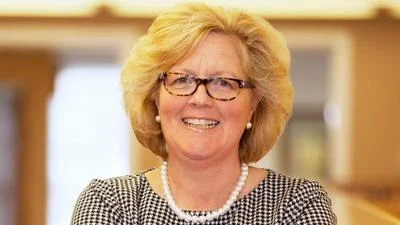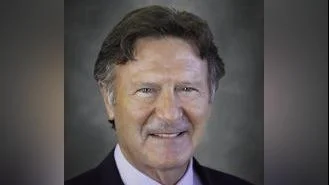City of Olney Council met July 18.
Here are the minutes provided by the council:
AGENDA #1 “CALL TO ORDER” The special meeting of the Olney City Council was called to order at 4:00 p.m. in the Council Chambers of the Olney City Hall located at 300 S. Whittle Avenue, Olney, Illinois, with Mayor Mark Lambird presiding.
AGENDA #2 “PLEDGE OF ALLEGIANCE TO THE FLAG-PRAYER” Council members and visitors joined in the pledge of allegiance to the flag. Mayor Lambird led the group in prayer.
AGENDA #3 “ROLL CALL” The following Council members were present: Greg Eyer, Morgan Fehrenbacher, Belinda Henton, John McLaughlin, and Mark Lambird. Also present were City Manager Allen Barker, City Clerk Kelsie Sterchi, City Treasurer Jane Guinn, City Attorney Bart Zuber, and City Engineer Mike Bridges.
AGENDA #4 “APPROVAL OF MINUTES FROM COUNCIL MEETING ON JULY 11, 2022” Councilwoman Fehrenbacher moved to approve the minutes from the Council meeting on July 11, 2022, seconded by Councilman Eyer. A majority affirmative voice vote was received.
AGENDA #5 “PRESENTATION OF ORDINANCES, RESOLUTIONS, ETC.” 5-A “Discussion/Possible Action: Infrastructure Improvement Plan” The Council was provided with a listing of Business District (BD) eligible costs, a listing of estimate costs for some street improvements, and some bond/debt information. As part of the process for establishing a BD, the City of Olney needed to come up with some sort of infrastructure plan that would help determine projects and rough budget amounts.
Mayor Lambird said that Street Department Supervisor Tyler Kocher and City Engineer Mike Bridges had worked together to create an estimate of street improvement costs for some roads in the proposed BD area.
Mayor Lambird also reminded the Council that at a 1% tax increase in the BD area, that could generate about $950,000.00 of additional revenue per year. Funds generated would be used towards improvements within the BD area.
Mr. Bridges told the Council that the cost estimates were based off of today’s pricing. For good measure, he did add a section that showed a total that included a 10% increase in case of contingencies. He pointed out that a large chunk of the estimated cost was due to the requirement of installing ADA ramps. No additional costs were shown that would include any sidewalk work.
Mayor Lambird asked if costs would decrease if more projects were done at the same time. Mr. Bridges believed so because it would reduce mobilization costs and should reduce unit pricing. Even so, Mr. Bridges cautioned that pricing would all depend on the price of oil.
Mayor Lambird then asked if the road improvements would last longer and have a similar cost if concrete was used. Mr. Bridges replied that the pricing would be substantially higher than what was listed if concrete was used instead, but it would lengthen the lifespan of the improvements.
Councilman McLaughlin asked what type of work the cost estimates reflected. Mr. Bridges replied that other than the portion of Butler Street listed in #3 and the portion of Clem Street listed in #17, work would include milling and resurfacing with asphalt.
Mayor Lambird asked if the estimates included any pricing on necessary water or sewer line work along the way. Mr. Bridges indicated that the estimates were for street work only and did not include any utility line work nor any storm sewer work.
Mayor Lambird was aware that the Main and Walnut Street storm sewer work would be the most costly, but pointed out that the City had some money reserved for the project.
Mr. Bridges recommended that any anticipated water or sewer line work take place at the same time that roads were torN up. It would not make sense to resurface the roads only to have water or sewer line work take place later that would destroy the work. He also recommended that the lines be moved from under the roads to the grassy right-of-way areas.
Mr. Kocher recalled some roads where he knew that utility lines existed underneath. Mr. Kocher also pointed out that the estimates did not include costs for curb work.
Mayor Lambird asked if it made more financial sense to complete as much road work as possible at one time by utilizing bonds or to piecemeal the work over 23 years. Mr. Bridges felt that all depended on the term length of the bond and interest rates.
Mayor Lambird then asked how much the price would increase from asphalt to concrete at the portion of Whittle Avenue listed in #2. Mr. Bridges believed that the cost could likely triple, but would at least double.
Mayor Lambird then informed the Council that Moran Economic Development had advised him that BD funds could be used towards Street Department equipment that would be used to maintain the streets.
Looking at the proposed BD area, Councilman McLaughlin asked why the boundary on Whittle Avenue ended at the railroad tracks. He felt the area should extend a bit farther to include the laundromat, gym, and liquor store. Mayor Lambird believed that would be a simple fix to include those areas.
Mayor Lambird felt that the BD would be extremely beneficial because so much infrastructure work was needed with many of the roads coming to the end of their lives. To help with this, the City would need to establish a rough plan to determine how much of the BD funds would be used towards infrastructure compared to economic development or maintenance of municipal buildings. The Mayor suggested reserving 75% of funds for infrastructure improvements, 20% of funds for economic development, and 5% of funds for maintenance of municipal buildings.
Thinking about sidewalk work, Mayor Lambird asked how much that would cost. Mr. Bridges believed that sidewalk work would cost about $20.00 per square foot or $100.00 per linear foot. For example, on the portion of Fair Street listed in #8, sidewalk work would cost an additional $25,000.00 to $30,000.00.
Councilwoman Henton wondered how funds would be used towards economic development. Mayor Lambird was not completely sure. He did point out that certain areas were planned to be annexed and those areas may require infrastructure work in order to bring economic development. He felt that would be a sufficient use of economic development funds.
Councilwoman Fehrenbacher asked if the percentages for infrastructure, economic development, and maintenance of municipal buildings would be set in stone once the Council took action. Mayor Lambird felt that the percentages would be set within reason, but that they would be somewhat flexible.
While Mayor Lambird understood that there was never a good time to raise taxes, he was fully aware that if the City did not establish a BD, then the General Fund would bear most of the weight of road improvements. The Main Street Resurfacing Project continued to loom ahead, and the City did not have enough money to complete the project. Mr. Bridges expected the resurfacing project and upgrading of traffic signals to total around $2,600,000.00. Mr. Kocher added that another $500,000.00 would be needed to resurface Main Street from Van Street to Route 50.
Councilwoman Fehrenbacher asked how much the City had set aside for the resurfacing of Main Street. Mrs. Guinn replied that a total of $438,000.00 was reserved.
Storm sewer work underneath of Main Street would also need to be addressed before any resurfacing project. That project alone would cost about $3,500,000.00. Mr. Barker informed the Council that a $2,000,000.00 grant would be received, ARPA funds would be used, and $600,000.00 had been set aside for the project. These combined should have that particular project covered.
Mayor Lambird asked Mr. Kocher how soon Main Street, Whittle Avenue, and Butler Street would need to be resurfaced. Mr. Kocher replied that Main Street would need to be done in about four years. Whittle Avenue could be pushed out about eight years. A majority of Butler Street needed work now.
Councilman McLaughlin knew that the City would need to determine if interest rates would outweigh inflation costs before borrowing bonds. Mayor Lambird agreed. He felt that the City would have a better handle on BD income after the first year of revenue. He would not recommend bonding until after the first year. He also believed that the City would have a better idea at this time next year if prices would begin to fall back in line.
Mr. Barker pointed out that a couple of years would be needed before the start of a project in order to complete engineering and the bidding process. He agreed that the first year of the BD should not see any projects.
Councilwoman Fehrenbacher felt it would be a good idea for the City to continue setting aside some funds for these large projects while BD income accrued.
Councilman McLaughlin stated that he was not particularly keen on the City gaining debt. Councilman Eyer was more strongly against debt and felt that the City should pay as it went along.
Mayor Lambird and Mr. Kocher had taken a look at Bradley Drive earlier in the day. Only about 30 houses stood on that road. Not all driving residents drove on Bradley Drive, but all driving residents did drive on Main Street, Whittle Avenue, and other main thoroughfares. Without extra revenue, the Mayor said he could guarantee that there would not be enough additional money for sideline streets such as Bradley Drive to receive maintenance if the General Fund continued to syphon out large amounts on main thoroughfares.
Councilman McLaughlin asked if the BD would automatically sunset after 23 years with no way to renew. Mayor Lambird indicated that the only way to renew would be to go through State legislature. If passed, the BD could only be in effect for another 10 years.
Mayor Lambird moved to plan on using 75% of BD funds on infrastructure, 20% of BD funds on economic development, and 5% of BD funds on maintenance of municipal buildings, seconded by Councilman McLaughlin. A majority affirmative voice vote was received.
AGENDA #6 “PUBLIC COMMENTS & PRESENTATIONS” No one from the public wished to speak.
AGENDA #7 “CLOSED SESSION: SALE OR LEASE PRICE OF REAL PROPERTY; ACQUISITION OF REAL PROPERTY; AND APPOINTMENT, EMPLOYMENT, COMPENSATION, AND PERFORMANCE OF SPECIFIC EMPLOYEES” Councilwoman Fehrenbacher moved to adjourn to closed session to discuss sale or lease price of real property; acquisition of real property; appointment, employment, compensation, and performance of specific employees, seconded by Councilwoman Henton. A majority affirmative voice vote was received.
The meeting adjourned to closed session at 4:40 p.m.
AGENDA #8 “RECONVENE OPEN SESSION” Councilman McLaughlin moved to enter back into open session, seconded by Councilwoman Fehrenbacher. A majority affirmative voice vote was received. Open session resumed at 4:45 p.m.
8-A “Ordinance: Repeal an Ordinance Establishing the Hourly Rate of the Junior Accountant in the City Treasurer’s Office” The Council was provided with a proposed ordinance that would repeal an ordinance establishing the hourly rate of the Junior Accountant in the City Treasurer’s Office.
Councilwoman Fehrenbacher moved to approve Ordinance 2022-21, seconded by Councilwoman Henton. A majority affirmative voice vote was received.
Before adjourning, Mr. Zuber told the Council that he had been corresponding with an attorney regarding the Arcadia agreement. A couple of smaller changes were requested that Mr. Zuber saw no issue with, but there was another request regarding remodeling that Mr. Zuber brought to the Council’s attention.
The Council agreed that they were not in favor of the request regarding remodeling. Mr. Zuber would relay that information to the other attorney.
AGENDA #9 “ADJOURN” With no further business to discuss, Councilwoman Fehrenbacher moved to adjourn, seconded by Councilman McLaughlin. A majority affirmative voice vote was received.
The special meeting of the City Council adjourned at 4:47 p.m.
https://cms2files.revize.com/olneynew/sp%20cc%20july%2018%202022.pdf





 Alerts Sign-up
Alerts Sign-up